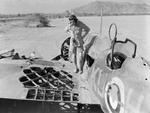Germans, Italians and Japanese used the explosive ammo for their heavy MGs during the ww2. Is there an assesment of how good actually that type of ammo was worth it vs. a (probably) simpler and cheaper API?
Paging also A A.G. Williams
Paging also A A.G. Williams


